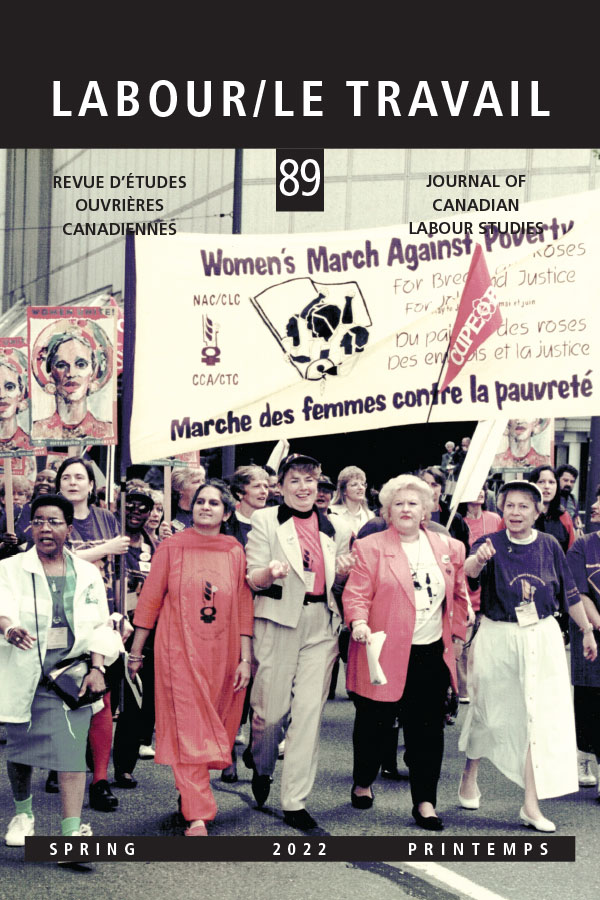Published 2022-05-27
Keywords
- prisons,
- gender and incarceration,
- prison labour,
- carceral state
How to Cite
Abstract
The Prison for Women, Kingston Penitentiary, and Collins Bay Penitentiary each offered an increasing variety of vocational training opportunities to incarcerated people in the mid-20th century. This article examines vocational training in these Kingston-area prisons from 1950 to the mid-1960s and argues that access to these programs was based largely on gender and age. Foucault’s idea of governmentality supports analysis of how the Penitentiary Service of Canada, reformers, and prisoners understood the process of learning how to work. Women incarcerated at the Prison for Women were trained in fields that mirrored domestic labour, and limited numbers of younger women were given access to trial vocational training in women-dominated fields such as hairdressing. Young men in their teens and twenties incarcerated at Collins Bay Penitentiary were given access to skilled trades, while older men at Kingston Penitentiary could try to qualify for transfer to Collins Bay Penitentiary by taking basic educational course upgrades. These vocational programs were supported by the John Howard Society of Ontario and the Elizabeth Fry Society of Kingston, local prisoner aid societies that helped formerly incarcerated people find jobs and coordinated with prison administration to bolster rehabilitation programs.
La Prison des femmes, le Pénitencier de Kingston et le Pénitencier de Collins Bay offraient chacun une variété croissante de possibilités de formation professionnelle aux personnes incarcérées au milieu du 20e siècle. Cet article examine la formation professionnelle dans ces prisons dans la région de Kingston de 1950 au milieu des années 1960 et soutient que l’accès à ces programmes était largement basé sur le sexe et l’âge. L’idée de gouvernementalité de Foucault soutient l’analyse de la façon dont le Service des Pénitenciers du Canada, les réformateurs et les prisonniers ont compris le processus d’apprentissage du travail. Les femmes incarcérées à la Prison des femmes ont été formées dans des domaines qui reflétaient le travail domestique, et un nombre limité de jeunes femmes ont eu accès à une formation professionnelle à l’essai dans des domaines à prédominance féminine comme la coiffure. Les jeunes hommes dans l’adolescence et la vingtaine incarcérés au Pénitencier de Collins Bay ont eu accès à des métiers spécialisés, tandis que les hommes plus âgés du Pénitencier de Kingston pouvaient essayer de se qualifier pour être transférés au Pénitencier de Collins Bay en suivant des cours de formation de base. Ces programmes professionnels ont été soutenus par la Société John Howard de l’Ontario et la Société Elizabeth Fry de Kingston, des sociétés locales d’aide aux prisonniers qui ont aidé les anciens incarcérés à trouver un emploi et ont cordonné avec l’administration pénitentiaire pour renforcer les programmes de réadaptation.
